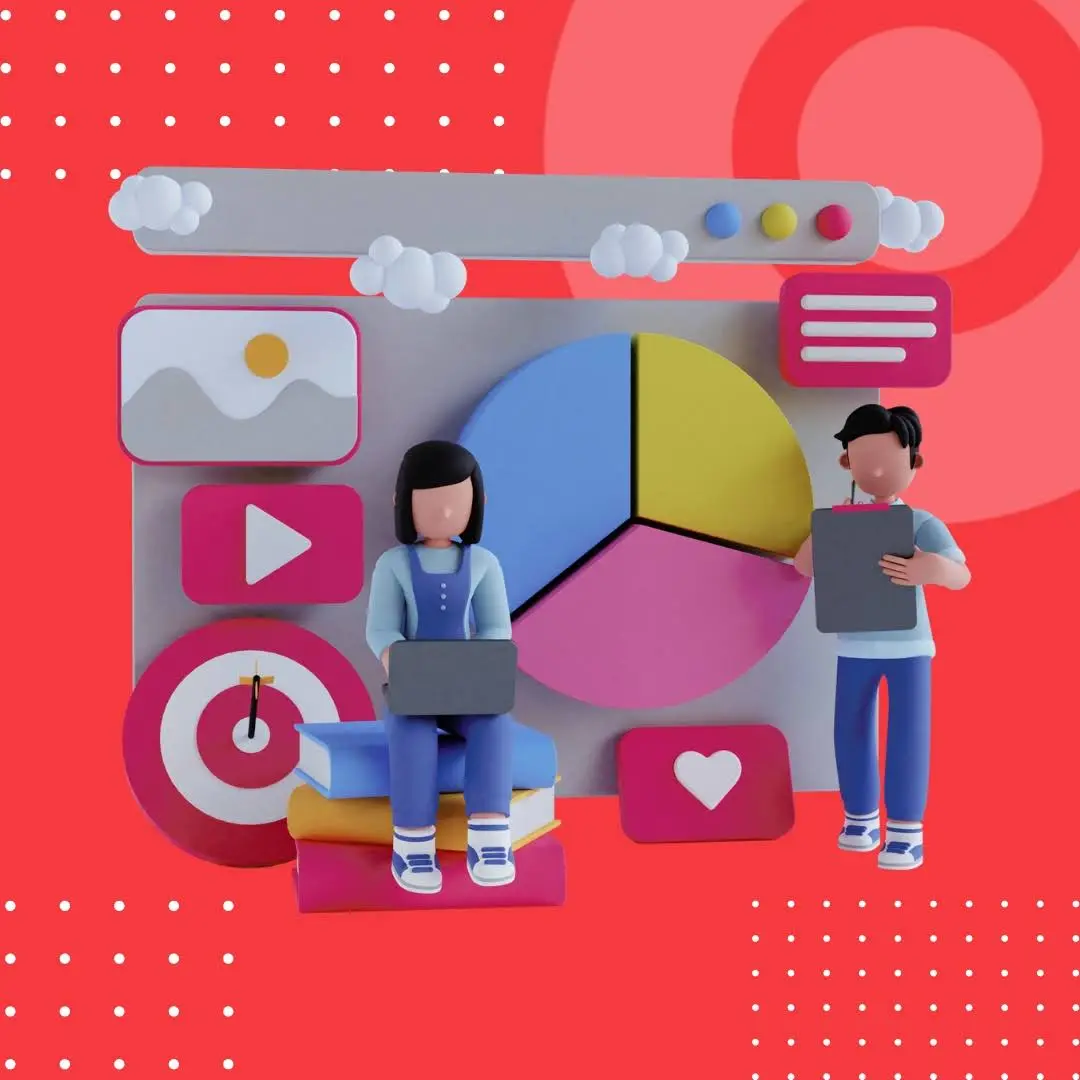How does A/B Testing Help Businesses to Boost Leads or Conversions?

I. Introduction to A/B Testing
Often it is said that reaching potential customers is essential for its growth. While it is true to some extent, more important is to lead conversions and retain the customers. There are multiple platforms to generate leads like websites, social media, ads, email, etc. However, for finalizing the targeting options, designs, content, copies, and newsletter designs, testing is necessary. In this aspect, A/B testing is an important way.
A. Defining A/B Testing
In simple terms, A/B testing is a split method where the elements of marketing are tested over a given period. The process is done based on the performance of the versions. Then statistical analysis is implemented to determine which version has performed better.
B. Importance in Modern Business Strategies
To transform a business into a brand, it is imperative to apply diverse marketing strategies. Today’s digital landscape is constantly undergoing various changes; hence it becomes necessary to adapt to the changes. There is no one-size-fits-all approach if anyone wants to stay in the market and dominate it. Among different procedures and methods, A/B testing is one of the best ones.
By testing the market frequently, A/B testing helps in identifying what resonates with the audience most. It helps businesses make data-driven decisions and drive optimal growth.
II. The Fundamentals of A/B Testing
A. Understanding the Purpose
The main purpose of the A/B testing is to continually examine and refine the marketing strategy built for a business, so the services and products can effectively reach their potential audience. The pivotal point here is data-driven decisions. This allows for measuring the ROI of the businesses. Tracking key performance metrics such as conversion rates, customer acquisition costs, and customer lifetime value, helps in assessing which marketing efforts are performing best and accordingly allocating the resources required.
B. Components of A/B Testing
A successful A/B testing relies much on how effectively its various components are organized and managed. All these combined, influence the final results of the testing which further leads to the process of decision-making.
1. Variations and Control
Control is taken as the base form or the original page against which variations are done and compared for results. Variations can be in terms of adjustments to headlines, images, call-to-actions, demographic targeting, or anything else. These variations are essential for finalizing which strategy influences the user experience in what ways and to what extent.
2. Metrics and KPIs
To get the full value of A/B testing, it is imperative to decide on what metrics the testing is to be done and how they will be calculated. The metrics and KPIs depend on what hypothesis is to be examined and observed further.
Click-through rate, bounce rate, conversion rate, scroll depth, abandonment rate, average session duration, etc. are some of the most common yet effective KPIs for A/B testing. The selection of the metrics will depend on the final goals and objectives of your business. Such testing needs to be run for at least a few weeks or a longer duration to get a substantial amount of samples.
III. How A/B Testing Drives Lead Generation
A/B testing by data-backed insights creates a reliable base for calculating what you will need to attain your marketing goals. It becomes a strong tool. It is a strategic method to make an opinion and constantly challenge the same to test new assumptions. Here is how it is done:
A. Optimizing Landing Pages
Optimizing landing pages helps in providing an overall view of what is working there and what is not. Sometimes only studying your audience is not enough. How your audience reacts to certain features and content of the landing page is crucial to understanding better outcomes.
1. Headlines and Content
An unusual and thought-provoking headline attracts and engages the audience. It is not only the visuals or creatives, but the content of the page also plays a vital role. It contains information about the services, any unique points of your brand, and any available offers. The content is specially built and organized so the probable queries of the customer are already addressed.
2. Call-to-Action (CTA) Elements
CTA deserves special attention as it can transform a visitor into a buyer. Everything from the background of the CTA to its size and color needs to be tested and finalized.
B. Improving User Experience (UX)
A/B testing permits the comparison of more than one landing page and helps refine design elements which enhances user experience and drives user engagement. Those data-driven decisions assist in satisfying the evolving user expectations.
1. Navigation and Design Elements
With this technique, designers experiment with variations in menu structures, button placements, and overall navigation flow. Differences in user interactions and feedback on different versions provide the required data and pinpoint the most intuitive and user-friendly navigation scheme.
2. Mobile Responsiveness
Experimenting with different layouts, font sizes, and interactive elements helps in identifying the mobile design that resonates best with the audience. This process reduces the possibility of bouncing on mobile platforms and also creates a seamless and responsive design that fosters a more enjoyable experience for the users.
IV. Enhancing Conversions Through A/B Testing
More than often, first impressions become the deciding factor for continuing further actions. Business is also the same. The probability of acquiring a new customer depends on how your product presentation and the overall looks can capture their attention. With A/B testing, it becomes easier to know which version is appealing to your potential customer more and you can finally move ahead with that.
A. Refining Product Descriptions and Images
1. Visual Appeal and Descriptive Copy
Experimenting with visual and textual content helps businesses identify the most relatable combinations of product images and descriptions. This adds to the aesthetic appeal and also makes the communication better in terms of the value proposition.
2. Product Presentation Variations
The impression and chance of conversion of a consumer are greatly influenced by the manner a product is presented. Hence, experimenting with the layout, product features, etc. helps a lot in creating a great impact on the customer.
B. Streamlining Checkout Processes
1. Cart Page Optimization
Simplifying the cart page and many of its elements helps in producing positive results. Experimenting and optimizing cart page designs and many of its features work for reducing abandonment rates and driving conversions.
2. Payment Process Evaluation
The payment process is a crucial stage where many customers drop off. Testing various payment gateways helps in adjusting the overall flow of the procedure. By establishing a user-friendly payment process, businesses can build trust in the customer and increase their chances of conversion.
V. The Impact of A/B Testing on Digital Marketing Strategies
The impact of A/B testing of digital marketing strategies is transformative and long-lasting. Reshaping the extent of digital engagement helps in altering the way a business holistically interacts with its customers.
A. Email Campaign Optimization
1. Subject Lines and Content Variations
Testing with various email formats, different tones, styles, content lengths, and creatives helps in understanding what prompts the users to click and engage more with your brand. This helps in providing customized offers and garnering more conversions.
2. Timing and Frequency Testing
The optimal time to send an email and the frequency of sending a communication via email varies from one customer to another. Researching this and finalizing one helps in establishing the most effective email campaign.
B. Social Media Advertising
1. Ad Copy and Visual Variations
Hitting the nail with the perfect combinations of ad copy and visual elements is a constant challenge in the realm of social media advertising. A/B testing helps in crafting that one creative that will encourage your customers and lead to a higher engagement rate.
2. Audience Segmentation Testing
A/B testing permits audience segmentation techniques which in turn, helps in creating content according to the demographics, age, behavior, or interests. Using this process, digital marketing professionals optimize their ad spend and better target their ads knowing which segment will respond the most.
VI. Implementing A/B Testing Tools and Platforms
Incorporating proper A/B testing tools and platforms is an essential step in navigating through the intricate area of data-driven decision-making. From selecting the right tools to formulating effective test hypotheses and executing the experiments with utmost precision, harnessing the benefits of A/B testing enables an analyst to work on their digital visibility.
A. Overview of Popular A/B Testing Tools
1. Platform Features and Capabilities
There are a multitude of testing tools with various features and benefits. As a digital marketing analyst, the first thing to be done is doing an overall analysis of the tools and studying their respective strengths and weaknesses. Depending on the desired objectives and goals, the final tools and platforms are chosen.
2. Cost and Integration Considerations
Assessing the financial implications and how seamlessly the new tools integrate with the existing business infrastructure, is another important factor to consider while selecting the A/B testing tools. This helps in making informed decisions.
B. Step-by-Step Guide to Setting Up A/B Tests
1. Test Hypothesis Formulation
Test hypotheses are based on educated predictions. Drawing information from data received and based on the business goals, analysts build effective test hypotheses. With these hypotheses, business experiments are guided toward the desired outcomes.
2. Execution and Analysis
Engaging so much intelligence to formulate the testing hypotheses goes in vain if the execution fails. Selecting effective tools that will simplify the whole process and draw actionable insights is what makes the whole testing process more appealing.
VII. Key Metrics and Analytics in A/B Testing
A. Identifying Relevant Key Performance Indicators (KPIs)
1. Conversion Rate (CR) and Click-Through Rate (CTR)
These two are situated at the heart of A/B testing. These KPIs give a glimpse at the user intention- right from the initial engagement to the final conversion. Exploring these helps in providing a quantitative measurement of success and highlights how the variations affect user behavior.
2. Bounce Rate and Engagement Metrics
Bounce rate and engagement metrics play a vital role in deciphering the nuances of user interaction. A low bounce rate and a high engagement metric reveal whatever strategy is being implemented, is doing its job perfectly fine.
B. Interpreting Test Results
1. Statistical Significance and Confidence Levels
Statistical significance provides the base for all calculations and experimentation of A/B testing. Whether the provided data is real or the effects of mere chance, are established by effective stats and outcome procedures.
2. Iterative Testing and Continuous Improvement
A/B testing does not end with one experiment. It goes on, new guiding principles built on the insights of the previous tests. Iterative testing is what makes the whole process so successful and accurate.
VIII. Overcoming Common A/B Testing Challenges
During A/B testing, analysts often encounter challenges that require strategic interference and prompt resolution so the process does not face any hindrance. It asks for more than just technical expertise; it is about a strategic mindset that anticipates and navigates through potential pitfalls of the experiment.
A. Sample Size and Test Duration
1. Determining Adequate Sample Size
Inadequate size of the sample leads to inconclusive results and misinformed decisions. Factors like desired confidence levels and expected effect sizes should be kept in mind while experimenting. With this, analysts can ensure the outcome is also practically meaningful.
2. Timeframe Considerations
Balancing between the speed and accuracy of the result is a difficult job. But this is where the experience of the analysts comes into play. Keeping in mind the expected user behavior, the time frame is fixed and settled.
B. Avoiding Biased Interpretations
1. Data Integrity and Accuracy
Digital marketing experts understand the intricacies of data accuracy and integrity, from technical issues to incomplete datasets. Mitigating these issues will increase the reliability of the findings and the test results.
2. Mitigating External Influences
Identifying strategies that mitigate factors that add up to external influences will ensure the variations in results are a direct consequence of the intentional changes and not some external factor.
Conclusion
If you run a business and want to generate leads through digital platforms, A/B testing can help you. However, it requires too much technical knowledge and experience to do A/B testing on a successful campaign. You can contact Brrandom Media which is the best digital marketing agency in Kolkata. Brrandom Media has years of experience and technical knowledge in digital marketing.
A/B testing or split testing is a marketing strategy where you split your target audience and test two variations of one campaign and decide which one is giving the desired outcome. To understand which part of the campaign is resonating with your target audience and which part is getting the opposite reaction, A/B testing is crucial.
Google Optimize, Hotjar, VWO, Unbounce, etc. are some of the most prominent tools recommended for A/B testing.
Inadequate sample size, avoiding seasonal variations, ignoring external influences, and not paying attention to long-term effects are some pitfalls to notice while conducting A/B tests.
Yes, A/B tests can be applied to see how your campaign performs on different market channels. It also provides data on how a combination of various marketing channels works for your target audience.





